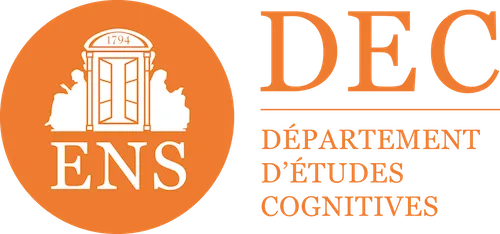

LMS, LXP, LCMS, authoring tool... How do you choose your learning equipment?
Currently, several types of tools and platforms are offered to organizations in the learning market. They are aimed in particular at learning or human resources departments, training managers and trainers of all kinds, wishing to digitize their content while optimizing the development of learners' skills. Numerous confusions exist - sometimes even deliberately maintained by players present on the market - between these acronyms that are similar but not Siamese brothers, whose borders are not always watertight and whose definitions vary. A real digital mess. So here are some guidelines that we think can help you see more clearly and make the right choice.
The different types of learning tools and platforms
Let's talk little but let's talk well. Before going any further, here are some essential definitions.
The LMS (or Learning Management System)
It is the first type of Learning platform, dedicated to online learning, to have appeared on the learning market. LMS are constantly evolving, but were originally designed as tools for managing, administering and distributing training courses. These platforms initially focus on the administrator to allow him to centralize and automatically organize his training modules, mostly remotely. Large companies have been equipped with it for a long time, and many others (including SMEs and VSEs) have been equipped with it during the health crisis. The LMS environment has many key functionalities such as the storage, organization and distribution of training courses, the management of registrants, but also methods of analysis and statistics...
The LXP (or Learning Experience Platform)
It is a type of eLearning platform more recent, which is intended for the learning experience and is aimed directly at the learner. Like an explorer, he becomes an actor in his learning experience. The platform LXP has numerous functionalities and is particularly intended for the implementation of various educational formats. Thus, gamification, simulation exercises, social learning or the presence of a community space illustrate a fun and interactive pedagogical approach. But the key card of an LXP platform is undoubtedly the experimentation of personalized learning. It is supported by data generation and that is why it is associated with, or even assimilated to, Adaptive Learning. Clearly, the use of LXPs is designed for learners, so that they feel at ease and take advantage of the tool to be able to manage their training.
Good to know : the LXP is similar to the LEP (or Learning Engagement Platform). Even though The commitment and the learning experience are two very distinct concepts, there is a causal link between them (engagement is a result of the learning experience). For the sake of simplification, it is generally preferred to use the term LXP.
The LCMS (or Learning Content Management System)
It is a system that includes the essential functionalities of LMS (namely the administration and distribution of training content) and combines them with the creation of educational content. This platform is, in a sense, an augmented authoring tool, like the Didask solution. Moreover, since the LCMS offers fewer functionalities than an LMS/LXP, it is often less expensive and complex to set up. Two birds with one stone for the designer and his learners!
The authoring tool (or solution)
As its name suggests, the authoring tool is explicitly dedicated to anyone who wishes to develop training modules, from creation to writing through the design of activities or training content. The scope of action of the designer varies enormously from one solution to another via simple formatting tools (such as “improved Powerpoint”), to multi-format creation tools, to tools integrating educational guidance as is the case for Didask. Author tools can be completely independent or directly integrated into a platform. They can also be accessed as extensions of other platforms, in particular thanks to SCORM.
And SCORM in all of this?
This name (meaning Shareable Content Object Reference Model) refers to a standard or format for educational content that allows content to be shared, exchanged and operated from/thanks to the majority of platforms present on the learning market. SCORM is an essential element when using a tool creating a solution X, and when you want to establish clear and fluid communication with an LMS for a solution Y, for example: they must be able to interact and understand each other!
Good to know: to go further on the potential and the place in the future of authoring tools, we strongly recommend that you The ILDI author and UGC tool folder.
Learning platforms: how to choose them?
LMS, LXP, LCMS... These tools complement each other, due to the functionalities that are offered to you and the range of possibilities that are available to you, hence the confusion that arises. Let's not be afraid of words! LXPs are often improved LMSs, with more or less “learner-centric” functionalities, but the term sounds more modern and appealing. That said, the converse is just as true.
So how do you best equip yourself? This question is difficult to answer: we do not pretend to have the ultimate and universal truth on this subject. Rather than focusing on the acronyms labeled by the various learning solutions, it seems interesting to me to take stock of your essential needs and constraints:
“I am aimed at a large number of learners and I need to broadcast as much content.”
👉 We suggest that you turn to LMS or LXP features.
“I need to create content and distribute it to my learners. “
👉 You need an author solution and a solution to broadcast. Several options are possible, either an LMS/LXP coupled with an authoring tool, or an LCMS.
“I am looking for a wide variety of innovative formats, how can I equip myself?”
👉 An LXP seems like a safe bet.
“I already have an LMS and I want to create content/develop new formats.”
👉 We recommend that you associate an author solution with it.
“I need to create and deploy content, but I don't have the resources to run or fund an LMS/LXP.”
👉 The LCMS is a totally appropriate alternative in this type of case.
“I need to create courses but I don't have the skills or educational engineers to do it"'
👉 Aim for an author solution (coupled to a platform or as an extension) with integrated educational guidance as we do with Didask.
“I need to quickly digitize my training courses”
👉 As for the previous point, a solution with an educational framework will allow you to quickly rationalize your projects
Of course, the cases above are not exhaustive, but the attached answers will help you identify the key functionalities required, and from there, the type of solutions that seem most suited to your training challenges. It's up to you to play!
Make an appointment directly with our eLearning experts for a demo or simply more information.














